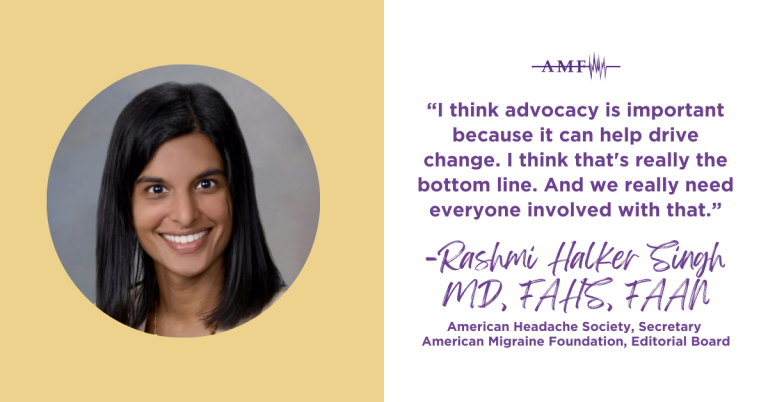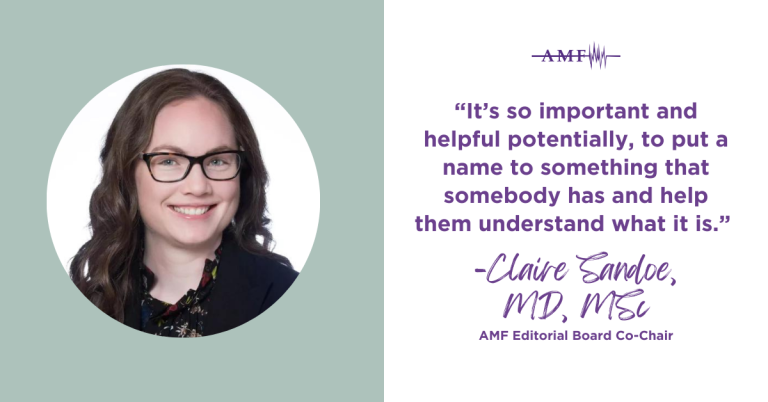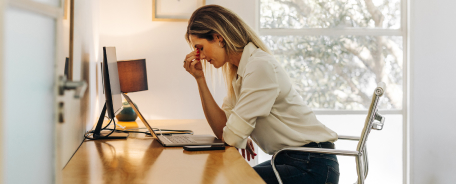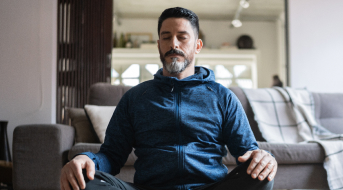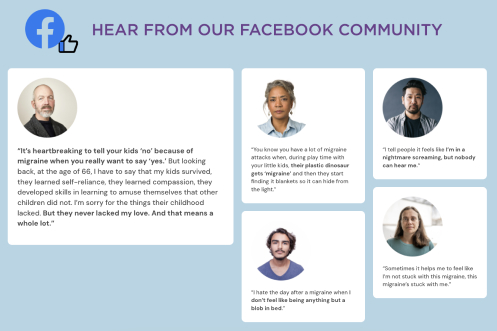Depression and Anxiety in Migraine Patients
Todd A. Smitherman, PhD and Steven M. Baskin, PhD
Key Points:
-
- Migraine patients are more likely to have depression and anxiety.
- Depression and anxiety are worse with migraine 15 or more days a month.
- When depression and anxiety are worse, more migraines are likely.
- Learning to recognize symptoms of depression and anxiety is helpful.
- There are medications and behaviors that help with depression and anxiety.
- Talk to your health care provider if you experience these symptoms.
Migraine, Depression and Anxiety
Many migraine patients suffer from symptoms of depression and anxiety. Migraine patients are between two to five times more likely to have these symptoms than patients without migraine. About 25% of patients with migraine have depression. About 50% have anxiety. Some patients have symptoms of these disorders after living with the burden of migraine. Others develop them before they develop migraine.
At this time, scientists don’t know the exact answer why all are so common. Scientists think they all share several problems. One is how the brain sends chemical messages from one neuron to another. Each shares a messenger called serotonin. Hormone changes in men and women affect depression. In most women, hormone changes are also important for migraine. People with migraine, depression, and anxiety are more sensitive to changes inside their body and around them.
Symptoms of depression and anxiety are most common among persons with chronic migraine. Chronic migraine consists of very frequent migraine attacks with 15 or more days of headache each month. For persons with fewer headaches, depression or anxiety puts them at risk for more headaches over time. Symptoms of depression and anxiety also impact other areas of health. Migraine patients with depression or anxiety have higher medical costs. They are at increased risk for suicide. They have higher levels of disability than do migraine patients without depression or anxiety. Perhaps most importantly, headache treatments don’t work as well when not being treated for these mood disorders. Untreated patients are less likely to follow medicine or behavior treatment plans. They also show less response to headache medications, and are more likely to relapse. For these reasons, best treatment of all these disorders is very important.
Warning Symptoms—Especially Feelings and Thoughts
Depression and anxiety treatment begins with symptom recognition. Recognition of depression and anxiety can be hard, as both often appear as physical symptoms. They may share some symptoms with migraine, for example, problems with sleep and appetite change, being easily upset, trouble concentrating, low energy, and dizziness are all symptoms of migraine, depression and/or anxiety.
As a result, it is better to pay attention to thoughts and feelings to help determine the difference. Depression usually involves strong feelings of sadness or hopelessness. These feelings usually last at least two weeks. Some migraine patients who are depressed do not feel sad, down, or hopeless. Instead, they are not as interested in activities that they normally enjoy. Others include feeling worthless, guilty, or thoughts of suicide.
Anxiety types
Anxiety disorders are the most common type of mental disorder. Nearly 30% of all people will meet criteria for an anxiety disorder at some point, but 50-60% of migraine patients will suffer from an anxiety disorder. Though there are several types of anxiety disorders, most involve chronic worry or fear and avoiding places and objects that trigger these feelings. The most common anxiety disorders for patients with migraine are panic disorder, generalized anxiety disorder, and phobias. In panic disorder, the patient has recurrent, unexpected feelings of terror. The heart starts beating rapidly and breathing becomes strained; other symptoms may involve sweating, fear of dying, or losing control. Although attacks don’t last very long and are not dangerous, many people develop significant anxiety between attacks, avoid certain places, and sometimes fear normal physical sensations that they associate with panic attacks. Patients with generalized anxiety disorder can’t control their constant worry about life events that may never even happen. They are “worry warts” who often expect disaster, even though there is little reason to feel that way. Physical symptoms often accompany this exaggerated worry. Phobias are fears of specific objects or places, such as an intense fear of social interactions that causes the patient to avoid most social situations (social phobia). Physicians and mental health professionals assess these symptoms through interviews, questionnaires, and observations of patient behavior.
Treatment Options
A number of drugs and behavioral treatments help with symptoms of depression and anxiety. Antidepressants reduce symptoms of depression and anxiety, and they change how the brain sends chemical messages (such as serotonin) from one neuron to another. Sometimes, a single method can help both symptoms of depression/anxiety and headache. However, many patients require two different drugs or behavioral treatments for a period of time. One method may be best for depression or anxiety. The second may be the best approach to prevent headaches. Behavioral treatments for depression require a belief in self-care. They often involve using enjoyable or rewarding activities. Patients often improve skills for interacting with other people. Changing thoughts about certain aspects of life can also be used. Behavioral interventions for anxiety include safe, gradual, and prolonged exposure to those people, places, or situations that the patient fears. It too involves changing how the patient thinks about those things. Behavioral treatments are effective for mild–moderate depression, and tend to be more effective than drugs for anxiety disorders, particularly for long-term symptom relief. For many patients, combining medication and behavioral treatment is better than either one alone for depression, anxiety, and headache.
Much work remains to help determine the best treatment options for different types of patients. We also need to better understand the impact that treating depression and anxiety has on headache and vice versa.
Remember, it is extremely important to obtain best treatment for each disorder; the depression or anxiety and the headache disorder. Safe and effective drug and behavioral treatments are available, so talk with your provider about any symptoms of depression or anxiety that you have.
Todd A. Smitherman, PhD, Assistant Professor of Psychology, University of Mississippi, Oxford, MS; and Steven M. Baskin, PhD, Director, New England Institute for Behavioral Medicine, Stamford, CT.


















